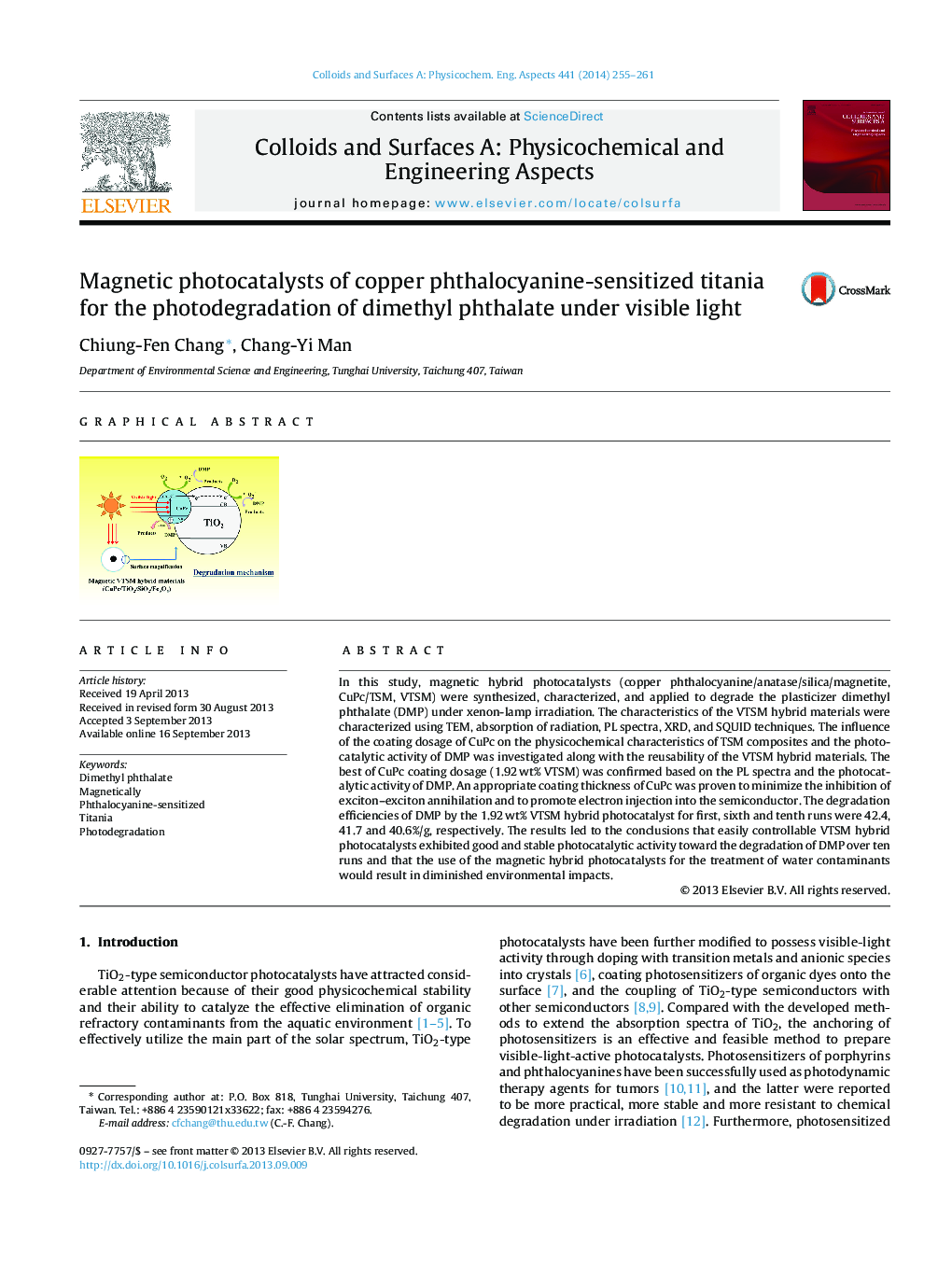| Article ID | Journal | Published Year | Pages | File Type |
|---|---|---|---|---|
| 593202 | Colloids and Surfaces A: Physicochemical and Engineering Aspects | 2014 | 7 Pages |
Abstract
In this study, magnetic hybrid photocatalysts (copper phthalocyanine/anatase/silica/magnetite, CuPc/TSM, VTSM) were synthesized, characterized, and applied to degrade the plasticizer dimethyl phthalate (DMP) under xenon-lamp irradiation. The characteristics of the VTSM hybrid materials were characterized using TEM, absorption of radiation, PL spectra, XRD, and SQUID techniques. The influence of the coating dosage of CuPc on the physicochemical characteristics of TSM composites and the photocatalytic activity of DMP was investigated along with the reusability of the VTSM hybrid materials. The best of CuPc coating dosage (1.92Â wt% VTSM) was confirmed based on the PL spectra and the photocatalytic activity of DMP. An appropriate coating thickness of CuPc was proven to minimize the inhibition of exciton-exciton annihilation and to promote electron injection into the semiconductor. The degradation efficiencies of DMP by the 1.92Â wt% VTSM hybrid photocatalyst for first, sixth and tenth runs were 42.4, 41.7 and 40.6%/g, respectively. The results led to the conclusions that easily controllable VTSM hybrid photocatalysts exhibited good and stable photocatalytic activity toward the degradation of DMP over ten runs and that the use of the magnetic hybrid photocatalysts for the treatment of water contaminants would result in diminished environmental impacts.
Related Topics
Physical Sciences and Engineering
Chemical Engineering
Colloid and Surface Chemistry
Authors
Chiung-Fen Chang, Chang-Yi Man,
